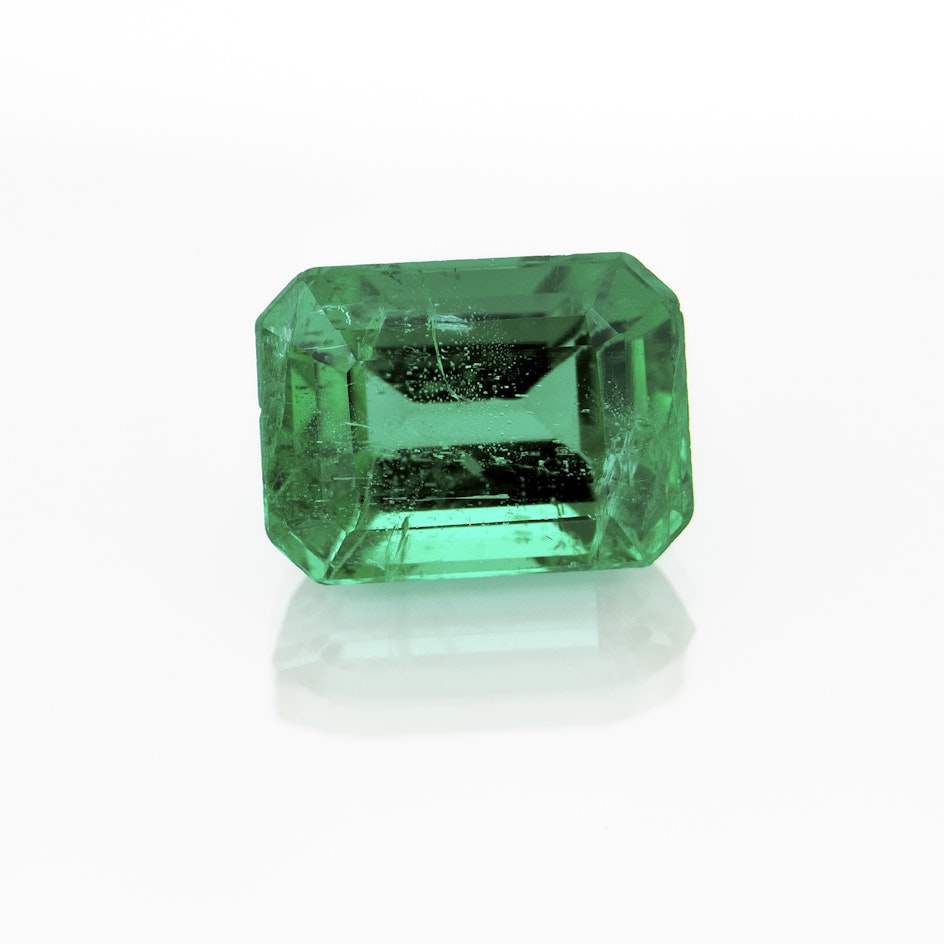Emerald | Chrome Green Variety of Beryl
Stone Description
Some colors have the power to pull you into a realm all of their own. Viewing the green of fine emerald can feel shockingly brazen, yet a surrounding feeling of comfort ensues as your gaze continues. Emeralds and their teal-tinged greens have persisted through centuries hand in hand with humans, inspiring acts emotionally wrought through artwork, thievery, poem, and even war. At its finest, emerald will show you a strong to vivid saturation of medium-toned green to bluish-green. Sophisticated and lively, the velvety returns of lush, jungle greens that emerald purrs are world treasures.
Emerald is classified as the very strongly bluish-green to green variety of the gemstone and mineral beryl (Be3Al2SiO6). Its nourishing green is due to its combination of trace elements vanadium, chromium, and iron. Varying levels of each dictate an emerald's personal combination of hue, saturation, and tone. Emeralds are most commonly mined from areas comprised of metamorphic rock and are hosted either in schists or pegmatites, while others are found in hydrothermal veins within sedimentary rock. These growing conditions create crystals that are typically included, making examples without visual interference a standout amid the already rare crystal.
Most emerald available today is mined in Zambia, Colombia, Brazil, Afghanistan, and Ethiopia. Colombian emeralds have provided the root of legends, their luscious greens spreading beyond local borders in the mid-1500s to Europe and its internal trade routes. These historic gems have inspired the standard against which all emerald is judged today. Trapiche emerald, a curiously grand showing of six crystals having grown in unison, traces their peculiar origin back to the Muzo region of Colombia. In the 1960s, Zambian emerald established its ability to supply the world with its clean, blue-leaning hues. Regardless of origin, it's necessary for stones labeled as emerald to contain a significant amount of depth to their color, caused by chromium or vanadium in order to differentiate from more common and lightly saturated green beryl.
Ranging from 7.5 – 8.0 on the Mohs scale of mineral hardness, emeralds are excellent choices for use in jewelry but must be handled with care. The majority of emerald is included and thus poses challenges to cutters and jewelers alike, requiring skilled hands to craft finished pieces. Children born in May carry emerald as their birthstone, while Taurus, Libra, and Cancer value it as a stone of power under the Zodiac. Emerald's high demand and infrequent occurrence of fine clarity crystals make it a rarity that has traditionally been treated with oil. The oil has the same refractive index as the emerald and therefore the crack in the stone is not so visible to the eye. Emerald's body of admirers has created a global market for emerald imitations and synthetic renditions, yet none stand a hope of vanquishing the sublime beauty of natural, succulent emerald.
-
Hardness: 7.5-8
-
RI: 1.546-1.595
-
SG: 2.76
-
Gem DNA: Be3Al2 Beryllium Aluminum(SiO3)6 Silicon Oxygen (trace amounts of Vanadium and Chromium create more or less intensity of greens)




